Our Curriculum
All students are all on Individual Education Plans (IEPs). The outcomes sought for students are aligned to the Western Australian Curriculum. The values which underpin the Curriculum Framework, also guide teaching and learning. Learning Areas – English, Mathematics, History, Geography, Science, the Arts, Health and Physical Education and Technology & Enterprise.
We have over 20 iPads in the school and all students are able to access them to assist in their curriculum access. Needless to say, the iPads are very popular with everyone and also function as rewards for good work. We also have four Smartboards with a variety of numeracy and literacy programs on them as well as a number of computers to support learning programs.
Inclusion with the Primary School
Our students are able to take part in classes in the primary school with their mainstream peers. This integration is individually organised for each student, depending on their needs. Mostly, our students take part in Art, Music, and Sport. Students also join with their primary school peers at recess as well as attending a variety of incursions, assemblies and special programs such as Edudance.
Student Assessment
Individual student achievement is directly related to progress towards the outcomes set in the children’s Individual Education Plans (IEPs). In Term 1, parents and carers are invited to meet with teachers and relevant support staff to review the students’ progress and agree on the student learning goals.
Learning Area academic objectives are determined and written into the IEP. In addition, some objectives included in individual plans might be more related to behaviour, health, hygiene, eating and social needs and these objectives also fit within one of the learning areas such as Health and Phys Ed.
IEPs form the basis for ongoing assessment and recording during the period, with teachers using a range of assessment tools such as formal and informal testing, check sheets, staff observation, anecdotal records, collaboration with therapists and outside agencies and parent notes. Teachers use photo recording to show progress where relevant (e.g. physical, social and academic skill progression). Teachers use Photostory to make eportfolios of photos showing the students engaged in a wide variety of activities during the year which are sent home to parents on thumb drives.
Although the IEP is reported on at the end of each semester, the students’ progress is communicated to parents regularly during the week through the students’ communication diary and personal contact. Feedback during formal meetings indicates that this process is valued by parents and caregivers.
In addition, we are using in-house developed assessments, the Numeracy and Literacy Checklist and the Independence Checklist which are very fine grained assessment tools specifically for our students, which allow us to chart the progress of individual students as well as give us an overview of class and school performance.
Report to Parents
- IEPs drawn up by staff and meetings held in Term 1 with parents to plan the priority areas for the year.
- Formal Reports sent home at the end of Terms 2 & 4.
- Photographic reviews (Photostory) of individual students sent home at the end of Term 3 as a record of the activities and programs sent on thumbdrive (which can be plugged in to computers, TVs, DVD and Blu-ray players).
- Parent information (News) is shared via Class Dojo .
- Notes written in School Diary (daily).
- Photos, videos and notes shared with parents daily via ClassDojo.
- Regular email correspondence between parents and principal/teachers.
Learning Outcomes
- Students use language to understand, develop and communicate ideas and information and interact with others.
- Students select, integrate and apply numerical and spatial concepts and techniques.
- Students recognise when and what information is needed, locate and obtain it from a range of sources and evaluate, use and share it with others.
- Students select, use and adapt technologies.
- Students describe and reason about patterns, structures and relationships in order to understand, interpret, justify and make predictions.
- Students visualise consequences, think laterally, recognise opportunity and potential and are prepared to test options.
- Students understand and appreciate the physical, biological and technical world and have the knowledge and skills to make decisions in relation to it.
- Students understand their cultural, geographic and historical contexts and have the knowledge, skills, and values necessary for active participation in life in Australia.
- Students interact with other people and cultures other than their own and are equipped to contribute to the global community.
- Students participate in creative activity of their own and understand and engage with the artistic, cultural and intellectual work of others.
- Students value and implement practices that promote personal growth and well-being.
- Students are self-motivated and confident in their approach to learning and are able to work individually and collaboratively


